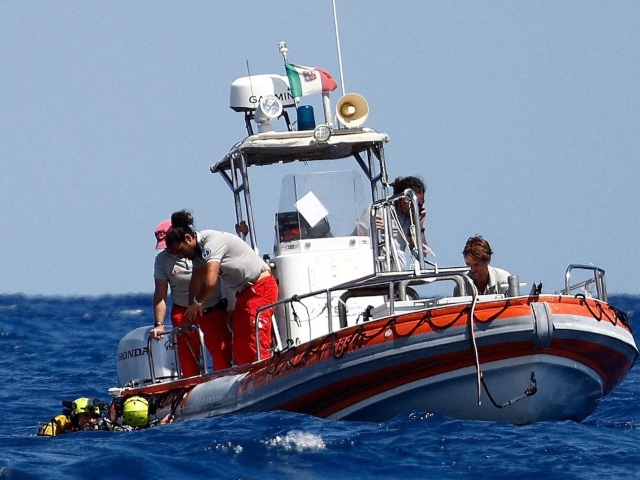
-
Autopsies Reveal Bayesian Victims Died Of ‘Dry Drowning,’ Painting A Terrifying Picture Of Their Last Moments
06 Sep 2024 by Heinrich in Boats, Tech/Sci, World
[imagesource:facebook/telegraph]
Initial autopsies of four of the seven victims who died when a superyacht sank in a storm in Italy last month show they died of “dry drowning,” according to authorities.
The phenomenon, also known as “atypical drowning,” means they had no water in their lungs, tracheas or stomachs.
The results of the autopsies of the first four victims suggest that they had found an air bubble in the cabin in which five of the victims’ bodies were discovered, and had consumed all the oxygen before the air pocket turned toxic due to carbon dioxide, according to local media reports.
All seven victims were scanned for injuries last Saturday, which found none had suffered broken bones or other physical injuries that might have contributed to their deaths.
The Forensic Medicine Institute of the Palermo Polyclinic hospital conducted the autopsies on American lawyer Chris Morvillo, his wife Neda Morvillo, and Morgan Stanley banker Jonathan Bloomer and his wife Anne Elizabeth Judith Bloomer, according to authorities.
Autopsy results are expected on Friday for British software mogul Mike Lynch and his 18-year-old daughter.
The prosecutor investigating the case first suggested earlier in August the idea that the victims had been searching for an air pocket. The ship will have to be raised for the investigation to continue and to ensure that the 18,000 litres of fuel onboard do not leak into the sea around the port of Porticello.
Bids have been sent out for the salvage, which will be paid for by the company of Lynch’s wife Angela Bacares, which owns the yacht.
Meanwhile, Loose Cannon has published a report from boat design expert, Roger Long, which suggests “there really were only seconds to save lives”. Long worked with naval architect Tad Roberts on a detailed hydrodynamic model of the Bayesian.
The first indication of trouble for those asleep on the high side however would have been to have been thrown or dumped out of their bunks onto the floor. Next, they would have discovered that the floor was actually the opposite wall of the cabin.
To escape, they would have had to find and open the door which was now in the floor and drop through it across to the other side of the passageway now rapidly filling with water. Those on the low side would have found themselves lying on the side of the hull with the door they needed to escape through now in the “ceiling.” The disorientation and difficulty of moving around the vessel seeking exit would certainly have raised the death toll.
You can read his full report here, but Long’s ‘calculus of stability’ tends to support crew statements that they simply had no time to get everyone out.
[source:cnn&loosecannon]
Latest News
-
Thai Woman Sentenced To Death For Murdering 14 Friends With Cyanide In Shocking Killing Spree
[imagesource: Sararat Rangsiwuthaporn] A woman in Thailand, dubbed 'Am Cyanide' by Thai...
-
René Magritte Painting Sells For Record R2.1 Billion At Auction
[imagesource:renemagritte.org] A René Magritte painting portraying an eerily lighted s...
-
Brave Rape Survivor Alison Botha Faces New Challenge After Brain Surgery
[imagesource: Alison Botha] Gqeberha rape survivor Alison Botha, a beacon of resilience...
-
Get Ready For The Mother of All Celebrations As MCQP Turns 30
[imagesource:mcqp/facebook] Clutch your pearls for South Africa’s favourite LGBTQIA+ ce...
-
The Iconic Good Hope Centre Is Set For Redevelopment
[imagesource:capetown.gov] The City of Cape Town’s Mayoral Committee has approved the...
-






























